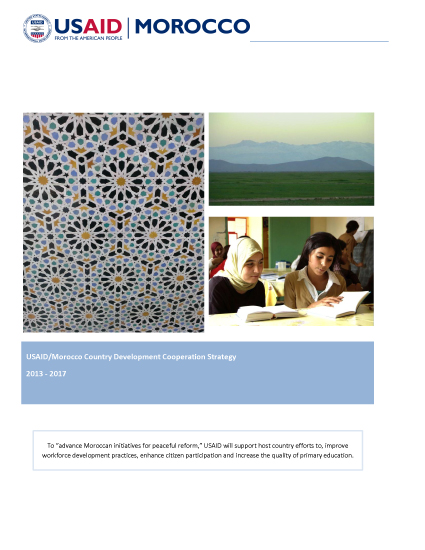On April 2, 1957, the United States and Morocco signed an agreement which commemorated the beginning of U.S. economic assistance to Morocco. Since then, USAID investments in water and irrigation contributed to the construction of the Mohammed V and Mechra Homadi dams, transforming thousands of hectares of semi-arid wasteland in the Oriental Region into productive use. As the Ministry of Health’s principal partner in family planning, maternal and child health for over 30 years, USAID has supported Morocco in lowering maternal mortality rates and improving child survival. Investments in microfinance and urban planning resulted in access to credit for thousands of entrepreneurs and infrastructure improvements to urban neighborhoods in Northern Morocco that modernized communities while maintaining the traditional social fabric.
Today, Morocco remains a stable Monarchy and vital ally to the Unites States. Since taking the throne in 1999, King Mohammed VI introduced various reforms, including the creation of a reconciliation commission on past human rights abuses; enhanced status and rights for women; and economic reforms intended to increase foreign direct investment. The United States and Morocco share a cooperative bilateral relationship built on recent achievements, such as the U.S.-Morocco Free Trade Agreement, U.S.-Morocco Science and Technology Cooperation (S&T) Agreement,1 the Millennium Challenge Cooperation Compact and significant non-NATO security cooperation. On September 13, 2012, the U.S. Secretary of State and the Minister of Foreign Affairs and Cooperation for Morocco launched the Morocco-U.S. Strategic Dialogue, one of only six such bilateral agreements in existence. As a formal institutionalized framework, the Strategic Dialogue establishes and enhances ongoing collaboration on political, economic, security, education and human rights issues.








Comment
Make a general inquiry or suggest an improvement.